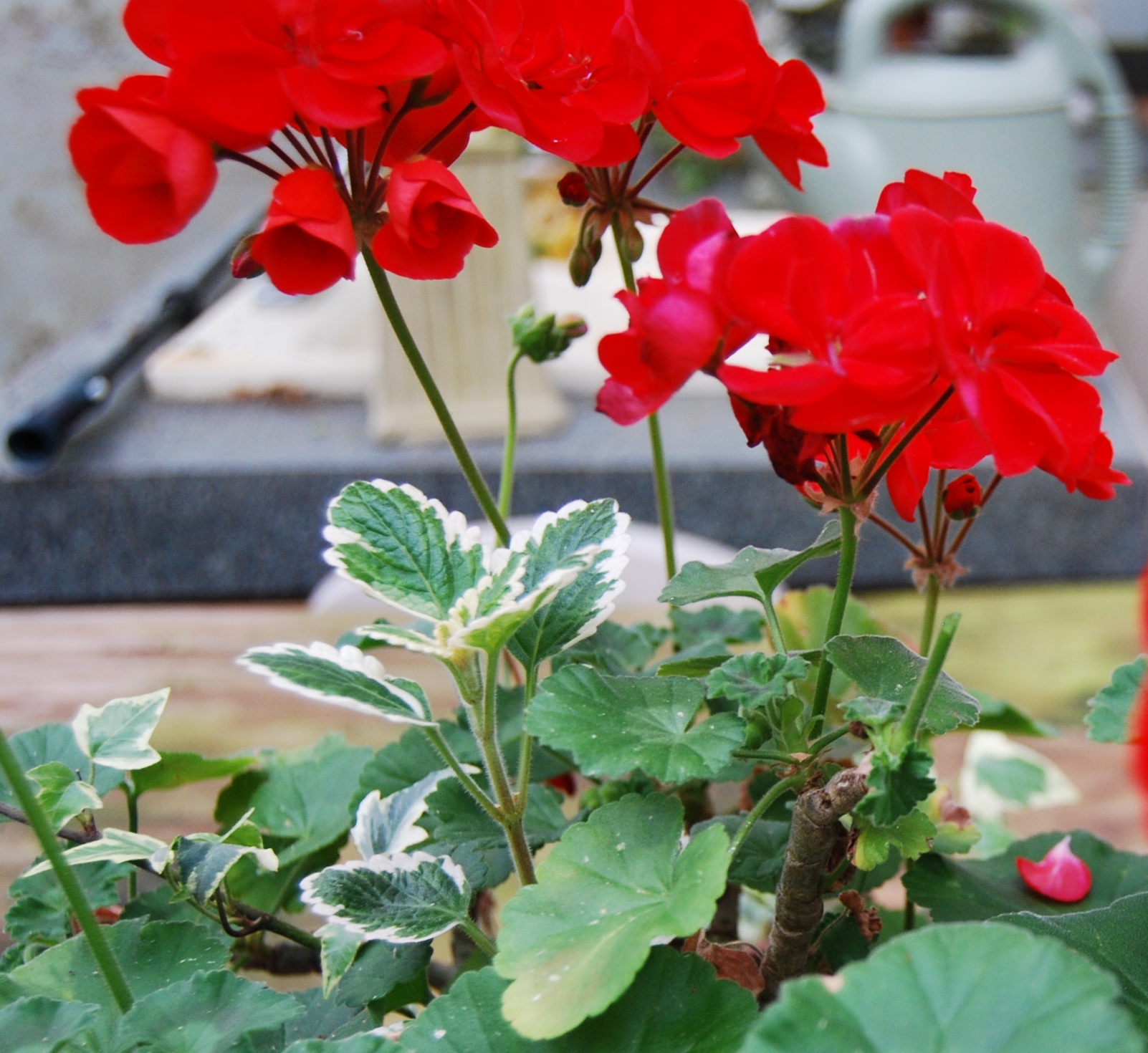This time of year is transitional for people and plants. When it’s time for us to get out warm sweaters and scarves, it’s also time to bring plants indoors for the winter.
Even when temps are not freezing, the wind this time of year can damage plants, so take care to watch the weather forecasts for any extreme weather changes.
I like to do this before the critical dip in temperatures we normally experience around Halloween. This gives me a chance to do a little housekeeping for my plants, such as removing leaves where little critters like to hide, pruning dead stalks or branches and cleaning up the pots the tender plants are inhabiting. This also gives me the opportunity to check the leaves for signs of insects, fungus and diseases.
Some likely culprits are mealy bugs (look like tiny white cottons balls), aphids (hard to spot little devils, but you can tell you have them by spotting blackened leaves on your plants, which are caused by excrement from the almost invisible-to-the-eye insects) and soft and hard scale. Scale insects attach themselves to the undersides of leaves and along stems, branches and vines. They are especially fond of ferns.
Ants are also prone to making their homes in the bottoms of plant containers. Yellow jackets sometimes summer in urns or under containers, so be careful not to let these biting insects and wasps invade your home by giving them a free ride inside.
You can treat your plants with dormant oil spray, which will usually rid any plants of insects, viruses and cold-related diseases or ailments that sometimes plague houseplants. It is much easier to spray them while still outside, however, because this is a toxin; take care to clean equipment and hands and any other uncovered skin that might have gotten contaminated. Always read the label carefully on any chemicals you use.
Other plant problems are usually caused by over-watering, hot/dry forced air, poor air circulation and low light.
All of these maladies can be nipped in the bud, so to speak, and pardon the pun. Water when top inch or two of plants are dry to the touch; this rule has exceptions, depending on what type of plant you are caring for. Things like ferns with very thin, papery leaves are wateraholics and need much more moisture than something like a jade plant, with its thick, water-engorged leaves. The general rule is that the thinner the leaf, the faster it dries out.
Hot, dry air can be combated in several ways. Some smaller plants can be set on a dish of rocks to which water is added periodically, creating humidity around the plant. Using an oscillating fan is a great way to keep the air circulating around plants, and a humidifier is also a good way to keep plants comfortable.
Take care to avoid placing plants near a vent. Blowing. heated air dries a plant out quickly, which invites insects and diseases to attack.
The less stressed a plant is, the healthier and happier it will be, and the less susceptible to insects and diseases.
Natural sunlight is a situation that is hard to recreate inside – but not impossible. You can supplement the light indoors by using grow lights, found at big box stores and some specialty plant shops. If that is cost-prohibitive or not possible to achieve, you can always move your plants near a south or west facing window. Be sure not to put them too near the glass in the depths of winter to avoid moisture from condensation turning into frost on the windowpane, or burning sun coming on through the glass on the warmest days, which might burn tender vegetation.
Plants will naturally turn toward the brightest light coming through windows, so to avoid a lopsided plant, turn a quarter-turn to the right each time you water the plant while indoors.
Other causes of plant failure include planting in containers without proper drainage, letting plants stand in water, placing plants in a drafty place and animals chewing leaves. Most can be taken care of with proper attention to detail. Overwatering is the chief cause of dead or sickly plants. Roots have to breathe – if they are constantly wet, they drown.
Fertilize every month with an all-purpose liquid fertilizer, like Miracle Gro. Pinch back leggy plants to promote new growth.
Plants are great indoor air purifiers, taking in carbon monoxide and turning it into oxygen. They also add aesthetically to almost any décor, from high-end modern to rustic country.
If you have questions about your plants, try contacting your local extension office; they are there to serve you.
Copyright 2016 Humble Roots, LLC. All Rights Reserved.
































